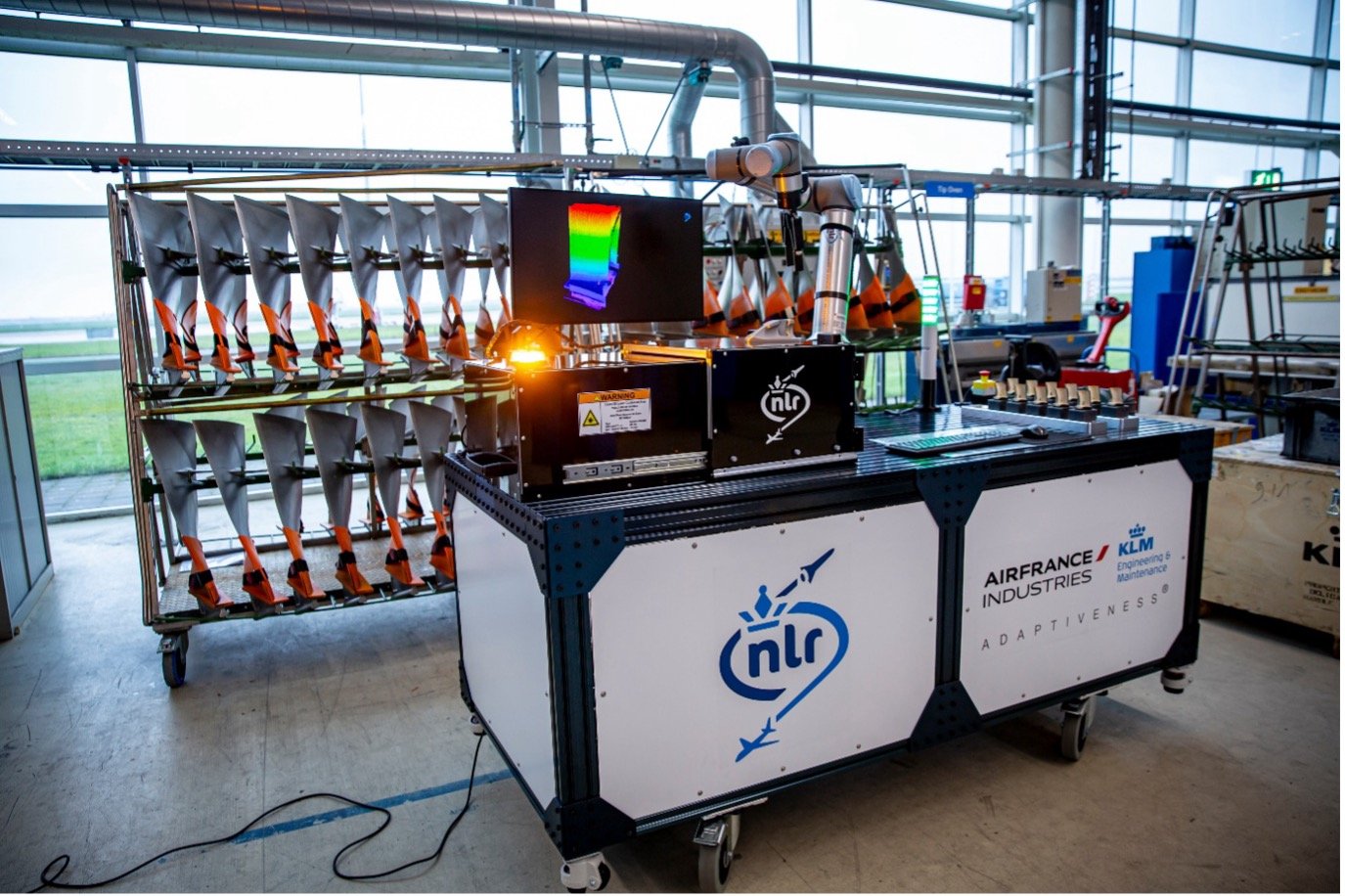Robotisation for maintenance
Netherlands Aerospace Centre (NLR)
The Royal Netherlands Aerospace Centre (NLR) operates as an objective and independent research centre, working with its partners towards a better world for tomorrow. As part of that, NLR offers innovative solutions and technical expertise, creating a strong competitive position for the commercial sector.
NLR has been a centre of expertise for over a century now, with a deep-seated desire to keep innovating. It is an organisation that works to achieve sustainable, safe, efficient and effective aerospace operations. The combination of in-depth insights into customers’ needs, multidisciplinary expertise and state-of-the-art research facilities makes rapid innovation possible. Both domestically and abroad, NLR plays a pivotal role between science, industry and government, bridging the gap between fundamental research and practical applications. Additionally, NLR is one of the large technological institutes that have been collaborating for over a decade in the Netherlands on applied research.
Link to the website: https://www.nlr.org/mro/
NLR’s contribution to R&D Mobility fund
-
Smart MRO (WP1)
Aviation maintenance is a labour-intensive sector that contributes to the mobility and competitive position of the Netherlands. Labour shortage threatens to become a factor in the performance of aviation maintenance. Therefore, maintenance organisations want to increase their productivity by using innovative maintenance technology.
Rules and legalisation:
Aviation regulations facilitate the use of innovative maintenance technology, which is at least functionally equivalent to original equipment manufacturers’ maintenance requirements. Functionally equivalent means that the interpretation of data obtained in an alternative way leads to the same airworthiness decision. Authorisation to use this technology is granted on the basis of procedures in the maintenance organisation exposition.
The product team for rules and legislation supports the qualification of innovative maintenance technology to enable its release to end users. A method for qualification is being developed and validated in a relevant environment.
Fluor penetrant inspection:
Fluor penetrant inspection is a widely used non-destructive testing method employed in aircraft inspections. It is a way of detecting defects, such as cracks, porosity, or other anomalies that may compromise the integrity of aircraft components. An automated digital imaging system is being developed to assist inspectors with the assessment of fluor penetrant inspections. The product team consist of HvA, KLM, NLR and S&T.
The product team for fluor penetrant inspections focuses on the digitization of component geometry and defects, by employing contactless imaging techniques, such as high-resolution photography and 3D scanning. Image processing methods such as computer vision techniques and artificial intelligence are used to recognize and classify various types of anomalies. This digitization process enables the creation of a comprehensive digital model, providing inspectors with enhanced visualization and analysis capabilities.
Cold spray repair:
Cold spray is a method to deposit solid powder on components with high velocities without melting the material in the process. This method is used to apply coatings to components or to repair damages. Applications for cold spray are developed to repair turbomachinery components. The product team consists of EPCOR, HvA, KLM, NLR and TU Delft.NLR is performing feasibility studies and requirements analyses of repairs. The feasibility studies comprise material research on representative specimen, involving mechanical tests (e.g. bonding, tensile strength, fatigue) and coating analysis on cross-sections. These tests are set up in consultation with the partners. Besides, NLR contributes to developing repair procedures and qualifying repairs.
-
Smart Availability (WP2)
Modern aircraft achieve very high dispatch reliabilities, but sometimes failures lead to an aircraft on ground. This situation may become complicated when an aircraft is unserviceable at an outstation. Defect rectification could depend on remote assistance from home base. Aviation maintenance has relied on email and telephone for decades to offer remote assistance to on-site maintenance engineers fixing the aircraft.
Virtualisation and remote support:
Innovative maintenance technology can improve the remote collaboration between maintenance engineers. Remote assistance may occur whenever an on-site maintenance engineer cannot perform defect rectification. Therefore, a hub-application is developed to support effective remote assistance. The hub-application should at least incorporate audio and videoconferencing. Therefore, WebRTC is implemented in order to set the baseline for providing remote assistance.
Other emerging technologies that are planned to be integrated in the hub-application are Light Detection and Ranging (LiDAR) and Neural Radiance Fields (NeRF). These technologies support the creation of digital twins through a combination of data acquisition and computational modelling. Digital twins are 3D representations of physical objects or environments. They provide real-time and detailed insight into the maintenance operation and into the actual condition of an aircraft.
Furthermore, by incorporating Augmented Reality (AR) technology the hub-application is able to provide real-time visual guidance, overlays, and instructions during aircraft inspections or maintenance procedures. This AR-enhanced experience improves efficiency, reduces errors, and facilitates remote collaboration between maintenance engineers.
The hub-application will not only address current challenges within the process of remote support, but will also pave the way for future advancements, positioning KLM and NLR as leaders in the aviation industry by embracing the potential of AR and other emerging technologies.
-

Smart training (WP5)
Maintenance engineers need training to stay proficient in their jobs. An example is the engine run-up training for maintenance engineers. This training requires the availability of an aircraft to perform engine ground runs. Using a training simulator would save jet fuel and engine noise. Furthermore, the aircraft remains available to execute the flight schedule.
Smart training:
NLR, JetSupport and KLM are co-developing a training simulator for engine run-up. This training simulator complements the high-fidelity flight simulator currently in use for engine run-up training. Part of this development is designing cockpits, scenarios and procedures with high learning value for maintenance engineers. The training simulator is a prototype and will be validated in an operational environment.
NLR and HvA are researching the application of Virtual Reality (VR) and haptics to the training simulator. These elements have the potential to enrich the learning experience of maintenance technicians. The look and feel of the training simulator must be realistic for effective learning.

